Executive Summary
APT35, also known as Magic Hound and Charming Kitten, is an Iranian state-backed cyber espionage group active since at least 2014. The threat actor is known for strategic intelligence-gathering, data theft, and disruption operations aligned with Iran’s geopolitical and military objectives.
The group’s primary targets include energy, government, defense, and technology sectors, with particular focus on Saudi Arabia and Middle Eastern allies. APT35 leverages spear-phishing, credential theft, and social engineering to gain initial access, followed by custom malware and persistence techniques to maintain long-term footholds in high-value networks.
APT35 (Magic Hound) is a state-sponsored threat group linked to the Islamic Revolutionary Guard Corps (IRGC) of Iran. First observed in 2012, the group conducts information theft and espionage operations in support of Iran’s strategic and intelligence objectives.
Its operations blend espionage with influence operations, often targeting government, private-sector, and research institutions to collect intelligence and shape narratives in favor of Iranian interests. Through persistent and well-coordinated cyber operations, APT35 has established itself as a key intelligence arm of Iranian cyber warfare, blending espionage with influence operations to achieve long-term geopolitical goals.
Known Aliases
- APT35 | Ballistic Bobcat | Charming Kitten | CharmingCypress | Cobalt Illusion | COBALT MIRAGE | Educated Manticore | G0059 | Magic Hound | Mint Sandstorm | Newscaster Team | Phosphorus | TA453 | TEMP.Beanie | Tarh Andishan | Timberworm | TunnelVision | UNC788 | Yellow Garuda
Notable Campaigns attributed to APT35 include:
- BadBlood | Sponsoring Access | SpoofedScholars | Thamar Reservoir
Operational Scope
APT35’s activities reveal a wide geopolitical footprint, with a primary concentration in the Middle East and North Africa (MENA) region. The group strategically extends its reach to Europe, the Americas, and the Asia-Pacific, conducting operations that align with Iran’s foreign policy and intelligence objectives.
Primary target countries:
Saudi Arabia | United Arab Emirates | Qatar | Israel | Kuwait | United States | United Kingdom | Germany | France | Canada | Australia | India | South Korea | Japan
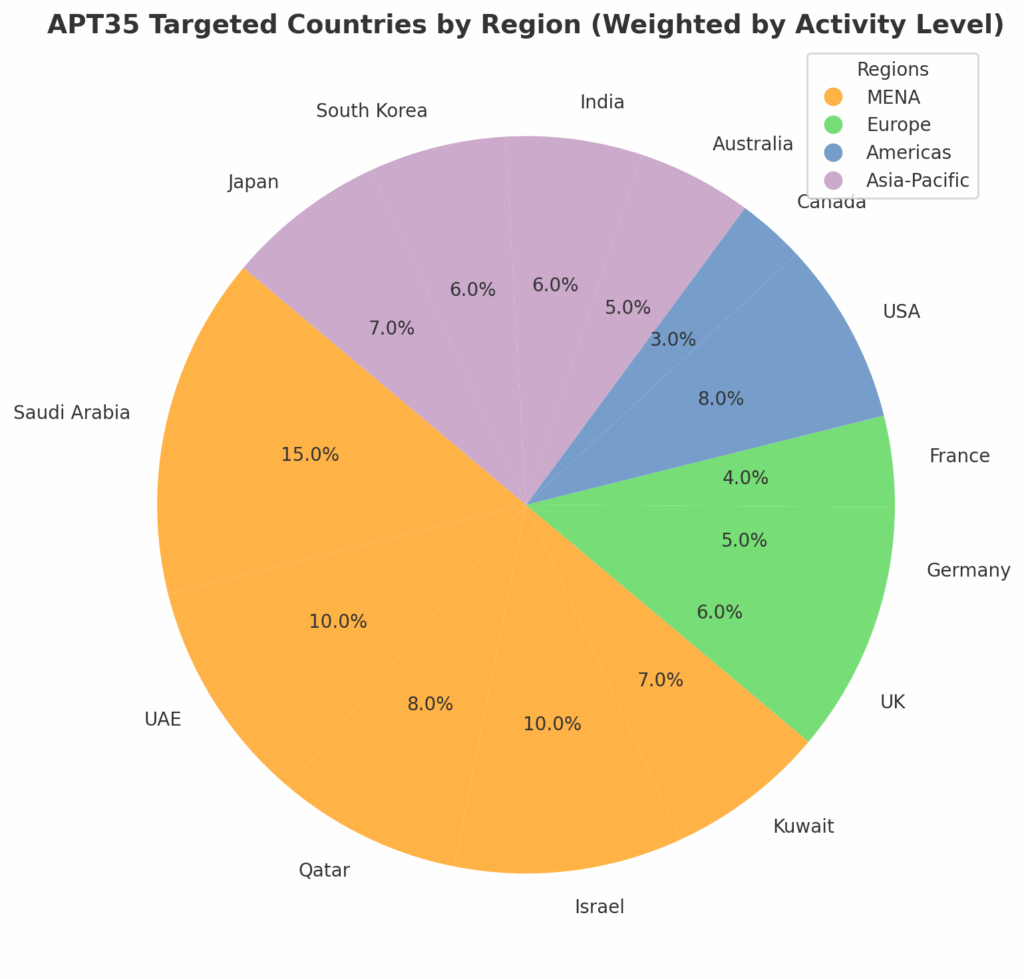
Targeted Sectors
APT35 runs highly tailored campaigns that prioritize espionage, data exfiltration, and operational disruption against organizations whose work matters to Iran’s national strategy.
Key sectors repeatedly targeted by APT35 include:
- Government Agencies & Diplomatic Bodies:
Focused on foreign ministries, interior ministries, and other high-value state institutions, particularly in Egypt, Saudi Arabia, and Western Europe. These entities are often targeted to gather diplomatic intelligence and influence policy decisions. - Energy & Critical Infrastructure:
Targets major oil and energy corporations, especially in Saudi Arabia and the United Arab Emirates, aiming to undermine regional energy stability and collect strategic industrial data. - Telecommunications:
Compromises telecom providers in the Gulf region and Western Europe to obtain network access, intercept communications, and facilitate secondary intrusions. - Defense & Aerospace Contractors:
Pursues military and defense technology firms in the United States, United Kingdom, and Gulf nations, focusing on sensitive data related to weapons development, logistics, and regional defense projects. - Media, Journalism & Influence Channels:
Targets news outlets, journalists, and media professionals, leveraging phishing and impersonation campaigns to manipulate narratives and conduct information operations. - Academia & Research Institutions
Infiltrates universities, research centers, and think tanks with expertise in Middle Eastern geopolitics, nuclear policy, and defense research, often for intelligence-gathering purposes. - Non-Governmental Organizations (NGOs):
Targets human rights and civil society organizations whose activities intersect with Iran’s strategic or ideological interests. - Information Technology and Cybersecurity Firms:
Attacks IT service providers and cybersecurity vendors to steal credentials, compromise supply chains, and gain indirect access to client environments. - Financial Services:
Exploits financial institutions and fintech platforms to evade sanctions, conduct reconnaissance, or facilitate broader economic disruption. - Legal Sector:
Targets law firms and consultancy practices engaged in sanctions compliance, litigation, and international arbitration, seeking insights into cases affecting Iranian interests.
Multi-Stage Attacks & Cross-Platform Espionage — Recent Activity (2023–2024)
Overview
Between 2023 and 2024, APT35 markedly intensified its operations, adopting more sophisticated social-engineering tactics and multi-stage infection chains to compromise high-value targets. The group combined refined phishing lures with layered payload delivery (cloud hosted C2, password-protected archives, malicious LNKs, etc.) to increase stealth, persistence, and the ability to bypass modern defenses.
Key developments (2023–2024)
- Escalation of complexity: Attack flows moved from single-stage malware drops to multi-stage chains that leverage cloud infrastructure, intermediary droppers, and encrypted/archived payloads to frustrate detection and analysis.
- Cross-platform reach: APT35 expanded from Windows-centric tooling to implants that support macOS and mixed environments, enabling espionage across endpoints, servers, and cloud services.
- Targeting profile: The group prioritized foreign affairs ministries, think tanks, nuclear/security researchers, journalists, academics, and civil-society organizations — essentially actors with strategic value to Iranian state objectives.
- Operational OPSEC & evasion: Use of IPFS/cloud hosting, anti-analysis measures, custom droppers, and legitimate service abuse to hide C2 and frustrate attribution.
Notable malware, tools & capabilities
| Period | Malware / Tool | Notable features & tactics |
|---|---|---|
| 2023–2024 | BellaCiao / BellaCPP | Custom Windows droppers; BellaCPP is a C++ successor with persistence, payload delivery capabilities and SSH-tunneling support for covert comms. |
| 2023–2024 | Powerstar (aka CharmPower) | PowerShell backdoor leveraging IPFS and cloud-hosted C2; supports screenshot capture, persistence, and anti-analysis techniques. |
| 2023–2024 | GorjolEcho / NokNok | PowerShell and macOS implants for cross-platform espionage and data exfiltration. |
| 2022–2024 | Hyperscrape | Email-harvesting tool designed to extract messages from compromised mailboxes for targeted intelligence collection. |
Exploited vulnerabilities
APT35 consistently exploits high-severity, publicly disclosed vulnerabilities to gain initial access and persist in victim environments. Representative CVEs observed in associated activity include:
| CVE | Common name | How APT35 used it |
|---|---|---|
| CVE-2021-44228 | Log4Shell | Remote code execution against public-facing services; used for rapid initial access and follow-on deployment. |
| CVE-2021-26855 | ProxyLogon | Exchange RCE used to install web shells and secure footholds on mail infrastructure. |
| CVE-2021-34473 | ProxyShell (component) | Chained with other Exchange issues to enable lateral movement and maintain persistence. |
| CVE-2021-34523 | ProxyShell (privilege escalation) | Used in privilege-escalation chains to deepen network compromise. |
Tactics & Tradecraft Highlights
APT35 campaigns demonstrate methodical tradecraft, combining social engineering with layered technical delivery to ensure long-term operational access.
- Multi-stage delivery: Lures → droppers (LNK, archives) → staged payloads → backdoors/C2.
- Legitimate infrastructure abuse: Cloud hosting, IPFS, and public services used to host or proxy C2 traffic.
- Credential harvesting & mailbox compromise: Focus on harvesting emails and credentials to scale reconnaissance and lateral access.
- Anti-analysis & persistence: Custom C++ implants, PowerShell obfuscation, and and multi-layer persistence mechanisms designed to resist detection and forensic analysis.
Operational impact
These enhanced capabilities enable APT35 to:
- Maintain covert, long-term access to sensitive networks.
- Exfiltrate diplomatic, defense, and energy intelligence with minimal detection.
- Operate across Windows, macOS, and cloud ecosystems with reduced exposure risk.
Key actors (roles & tradecraft)
APT35 — also known as Charming Kitten — operates through a network of skilled operators, infrastructure managers, and social-engineering specialists tied to Iran-aligned cyber espionage. Public reporting and judicial filings identify several individuals who have been linked to the group’s operational and hosting infrastructure, and who have been associated through social-media interactions, shared hosting resources, and alleged operational roles.
Key Actors (Roles & Tradecraft)
- Behzad Mesri (alias: “Skote Vahshat”, “Mr. Smith”)
Mesri is a long-standing actor linked to Iranian offensive cyber operations, reportedly involved in the 2017 HBO breach and several state-sponsored attacks. U.S. Department of Justice filings describe him as part of a broader ecosystem supporting IRGC-linked operations.

Mohammadamin Keshvari (aliases: “ArYaIeIrAn” / ArYaIeIrAn email handles shown in reporting)
Open-source reporting and vendor analysis have connected a persona using the handle ArYaIeIrAn to domain-management activity and to an individual identified as Mohammadamin Keshvari. That reporting links the persona to Mahanserver (an Iran-based web-hosting provider) and suggests a role managing malicious domains and infrastructure used in phishing and staging. These identifications are based on OSINT techniques (profile-picture correlation, domain registration/redirect patterns, and hosting relationships) and should be treated as vendor-level assessments.
Mohammad Rasoul Akbari (alias: “ra3ou1”) — Mahanserver
Publicly available profiles and reporting identify Mohammad Rasoul Akbari as the founder/CEO of Mahanserver, an Iranian hosting provider that has been observed in vendor reporting as hosting domains and services used in Charming Kitten-attributed operations. Analysts have noted social-graph connections (mutual follows/friends) between Akbari and other alleged operators in open-source material; vendor reporting also references Mahanserver infrastructure as being operationally useful to the group. Public business profiles for Akbari corroborate his role with Mahanserver.
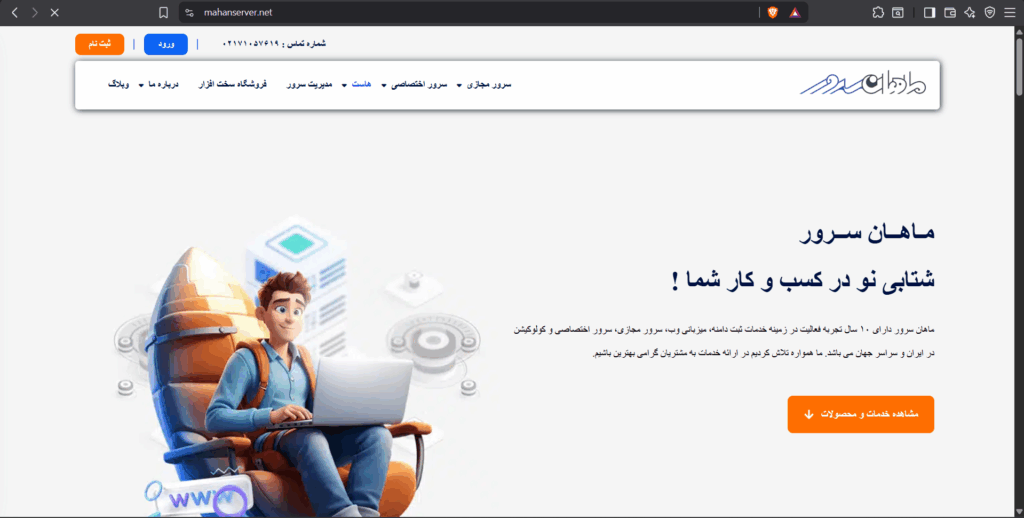
Infrastructure notes (public reporting)
Researchers have observed Mahanserver-hosted domains and persiandns-style redirects associated with command-and-control, drop sites, and staging pages attributed to Charming Kitten activity. Some reporting geolocates that infrastructure to Tehran, Iran, based on public IP/hosting data and mapping services; as with all infrastructure ties, these observations are operational indicators that require continual validation because hosting and routing can change quickly.
Assessment of Key Actors
With medium confidence, it is assessed that Behzad Mesri, Mohammadamin Keshvari, and Mohammad Rasoul Akbari serve as core members or critical enablers within APT35 (Charming Kitten). Collectively, they likely form part of the group’s operational backbone, working alongside additional, unidentified operatives.
Their demonstrated expertise in cyber intrusion, infrastructure administration, and social engineering strongly aligns with APT35’s established tradecraft and operational sophistication.


Vulnerabilities, Attack, and Campaign History
Charming Kitten Deploys New “NokNok” Malware
APT35 has recently advanced its operational toolkit by introducing NokNok, a newly observed malware variant specifically targeting macOS systems.
Unlike previous campaigns that leveraged malicious Microsoft Word documents, NokNok is delivered via LNK shortcut files, marking a significant shift in TTPs (Tactics, Techniques, and Procedures).
This campaign is characterized by a highly refined social engineering strategy, wherein threat actors impersonate U.S. nuclear experts and other credible figures to gain the trust of their targets.
Such impersonation techniques reinforce the group’s emphasis on strategic deception and human-targeted intrusion pathways.
Analysts assess this evolution as indicative of APT35’s ongoing adaptability and technical advancement, aligning with its broader mission of espionage and intelligence collection on behalf of the Islamic Revolutionary Guard Corps (IRGC).

GorjolEcho Backdoor
APT35 (Charming Kitten) delivers a multi-stage, cloud-hosted intrusion chain, blending social engineering with legitimate-looking cloud services to quietly bypass defenses.
Infection flow (summary):
- Operators send a malicious link that hosts a Google Apps Script macro which immediately redirects the victim to a Dropbox URL.
- The Dropbox location serves a password-protected RAR archive. The archive contains a small malware dropper that leverages PowerShell and an LNK shortcut to stage the next stage from a cloud hosting provider.
- The staged downloader fetches and installs the final payload — GorjolEcho, a remote backdoor capable of receiving and executing operator commands.
- As a deception measure, GorjolEcho opens a context-relevant PDF (e.g., a previously discussed document) on the victim’s system to reduce suspicion and delay incident discovery.

macOS-targeted Lure — RUSI VPN App (refined)
APT35 customizes each lure based on the target’s platform. For macOS users, they distribute a fake “RUSI VPN” installer — a ZIP file disguised as a legitimate app bundle.
When executed, the bundle quietly drops a covert payload and sets up persistence under the guise of a VPN client.

Attack characteristics (high-level, non-actionable)
- Platform-aware lures: Tailored macOS VPN themes boost victim trust.
- Disguised packaging: Malware wrapped inside .app bundles mimicking real software.
- Trust manipulation: Fake RUSI branding leverages credibility.
- Post-install stealth: Background persistence and covert network beacons maintain access.
Detection & defensive guidance (practical, non-actionable)
- Gatekeeper & notarization checks: Enforce Gatekeeper policies and require Apple notarization/code-signature verification for all installed macOS apps. Alert on execution of unsigned or non-notarized
.appbundles. - Download source controls: Restrict downloads from unverified cloud or third-party sources. Mandate checksum validation or integrity verification for any app distributed outside official channels.
- Monitor persistence artefacts: Watch for creation of suspicious
~/Library/LaunchAgents,/Library/LaunchDaemons, or other persistent plist entries following new app installs. - Process & child-tree telemetry: Alert on newly installed app processes that spawn shells, install background agents, or open uncommon network connections soon after first-run.
- Network egress monitoring: Profile expected behavior for legitimate VPN clients; flag deviations such as unexpected remote C2-like endpoints, long-lived low-volume connections, or connections to short-lived domains/object storage.
- User education & packaging hygiene: Train users to validate vendor sources and to treat unsolicited VPN installers with suspicion; establish an approved-app distribution channel (MDM) for required remote-access tools.



Mid-2025 Spear-Phishing Campaign — APT35 (Educated Manticore / Charming Kitten)
In mid-2025, amid heightened Iran–Israel geopolitical tensions, Iranian state-sponsored actors linked to APT35 (a.k.a. Educated Manticore / Charming Kitten) initiated a highly targeted spear-phishing campaign against Israeli journalists, cybersecurity professionals, and academics.
The campaign demonstrated APT35’s adaptive tradecraft, sophisticated deception, and deep understanding of human trust mechanisms.
Attack Summary
- Initial Approach:
Adversaries posed as research assistants, analysts, or conference coordinators, contacting victims through email and WhatsApp.
Messages contained fake meeting invitations, collaboration requests, or inquiries for expert opinions, all tailored to the target’s field of work. - Delivery Vector:
The attackers directed victims to phishing websites that mimicked Google services, particularly Google Login and Google Meet pages.
These sites were meticulously cloned and often hosted on legitimate Google Sites infrastructure, lending them additional authenticity. - Credential Theft Mechanism:
The phishing kit featured:- React-based web applications for realistic interactivity and responsiveness.
- WebSockets for real-time data transmission between victim and attacker infrastructure.
- Integrated keylogging and session relay capabilities, allowing immediate capture of credentials and two-factor authentication (2FA) codes.
- Live relay of 2FA codes, enabling attackers to log into accounts before token expiration.
Fake Personas, Malicious Content Pages, and Browser Exploitation.
APT35 routinely uses fabricated online personas and site content to build credibility, extend victim engagement, and create windows for technical exploitation.

Persona & social engineering tactics
- The group crafts convincing fake profiles (for example, a LinkedIn persona “Isabella Carey”) and shell news outlets to establish legitimacy. These personas and sites are used to initiate contact, cultivate trust, and encourage victims to remain on pages longer than they otherwise would.
- Common personas pose as students, journalists, or research assistants and are tailored to the target’s area of expertise—especially people researching Iran—so outreach appears contextually believable.
- Attackers use multiple communication channels (email, LinkedIn, WhatsApp, social media) and often link to content hosted on reputable platforms (e.g., Google Sites) to increase perceived authenticity.
Malicious site functionality
- The fake news pages frequently include links to attacker-controlled social accounts and interactive content designed to hold the visitor’s attention. Extended dwell time is an operational goal: it increases the chance of successful exploitation by client-side tooling.
- Embedded in these pages, operators have deployed Browser Exploitation Framework (BeEF) modules or similar browser-based tooling. While BeEF is a legitimate penetration-testing framework, in this context it’s used to probe a visitor’s browser for vulnerabilities, run automated exploitation attempts, and gather reconnaissance while the user remains on the page.

Operational tradecraft
- Use of trusted hosting (Google Sites, content hosted on reputable platforms) and realistic site design makes manual inspection less likely and can reduce automated filtering.
- Attackers chain social-engineering and client-side exploitation: social trust gets victims to the page → interactive content keeps them engaged → BeEF-like tooling probes and attempts exploitation.
Detection & mitigation (high-level, non-actionable)
- Treat unsolicited contact that encourages visiting third-party sites—especially those on hosted or branded platforms—with heightened suspicion.
- Monitor and alert on long-lived sessions where pages load third-party scripts or initiate WebSocket/long-polling connections not associated with known, legitimate services.
- Apply browser hardening and enterprise controls: block or alert on the execution of suspicious in-page scripts, disable unnecessary features (e.g., legacy plugins), and require up-to-date browser versions with security patches.
- Enforce strict phishing-resistant authentication and session protections to reduce the value of harvested credentials or session tokens.

OPSEC Failure
Major Breach of APT35 (Charming Kitten) — Internal Leak Exposure
In what appears to be one of the most significant exposures of an Iranian state-sponsored cyber operation to date, an anonymous whistleblower or rival actor has publicly released a cache of internal documents, employee data, and operational records belonging to APT35 (a.k.a. Charming Kitten / Educated Manticore) — a cyber-espionage group tied to Iran’s Islamic Revolutionary Guard Corps (IRGC).
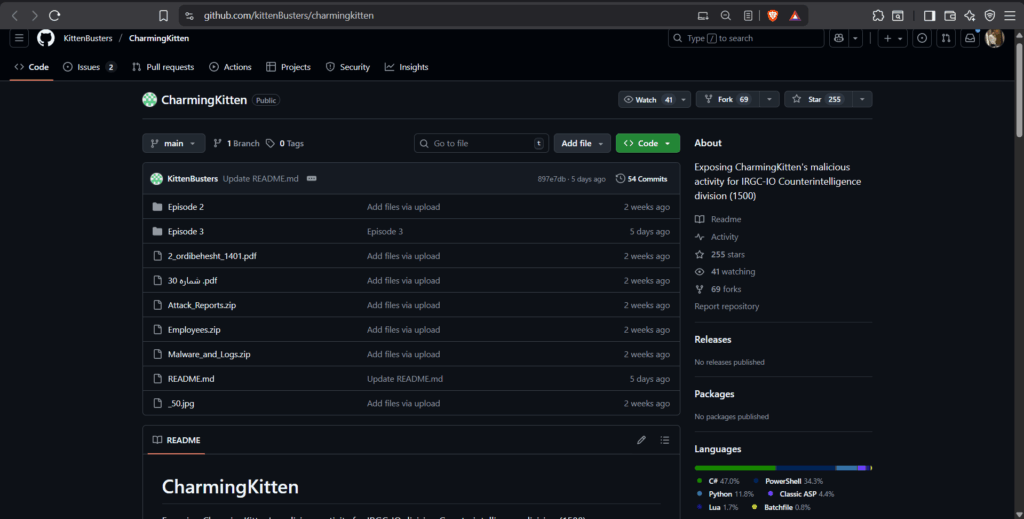
The leak, published on GitHub under the alias “KittenBusters,” exposes hundreds of internal files linked to Charming Kitten’s operations. These include attack reports, daily activity logs, internal communications, malware samples, and even photographs of personnel allegedly affiliated with the group. Among the disclosed details is the identification of Abbas Rahrovi (a.k.a. Abbas Hosseini), reportedly the leader of the operation. The leaked data includes his Iranian national identification number [4270844116] and suggests he oversees Charming Kitten’s cyber activities through a network of front companies used to obscure state involvement and facilitate operational funding.
What distinguishes Charming Kitten from other Iranian cyber actors is its patient and methodical tradecraft. The group’s operators frequently invest weeks or even months cultivating trust with their targets through carefully crafted social engineering campaigns. They often impersonate journalists, academic researchers, or conference organizers, engaging in extended correspondence to establish credibility before delivering malicious links, weaponized documents, or phishing payloads. This deliberate, human-centric approach reflects a strategic emphasis on persistence and psychological manipulation, setting Charming Kitten apart from more opportunistic or technically focused Iranian threat groups.

The leaked archive, meticulously organized into a hierarchical directory structure, exposes the day-to-day operations of a state-sponsored cyber unit. The documents span multiple years, with filenames referencing the Persian calendar year 1403—corresponding to 2024 in the Gregorian calendar—and earlier materials dating back to May 2022. This suggests the leak covers at least two years of continuous operations by the Charming Kitten group.
A prominent folder titled “All_Proxy_Shell_Targets” contains subdirectories for Iran, South Korea, Kuwait, Turkey, Saudi Arabia, and Lebanon, documenting exploitation activities against Microsoft Exchange servers through ProxyShell vulnerabilities. This aligns with Charming Kitten’s established tactics of compromising email infrastructures to obtain persistent access to sensitive communications.
Another directory, labeled “Attack Reports,” includes numerous Persian-language documents bearing the title “گزارش عملکرد ماهانه” (Monthly Performance Report). These reports, authored by operators identified as Majid, Mehyar, and Hosein, describe routine assignments such as monitoring social media profiles, conducting OSINT collection, and maintaining phishing infrastructure. In several cases, the files also record daily work hours, providing rare insight into the bureaucratic and regimented nature of Iranian state-backed cyber operations.

Perhaps most striking is a folder containing employee photographs, with filenames in Persian that appear to include personal names. This level of exposure represents a severe and unprecedented operational security failure for an intelligence unit that has historically maintained strict secrecy. The inclusion of personal identifiers and visual records of personnel not only compromises individual operatives but also provides unique attribution opportunities for intelligence and law enforcement agencies worldwide. This kind of leak is rare in state-sponsored cyber operations and significantly erodes the group’s ability to operate covertly.
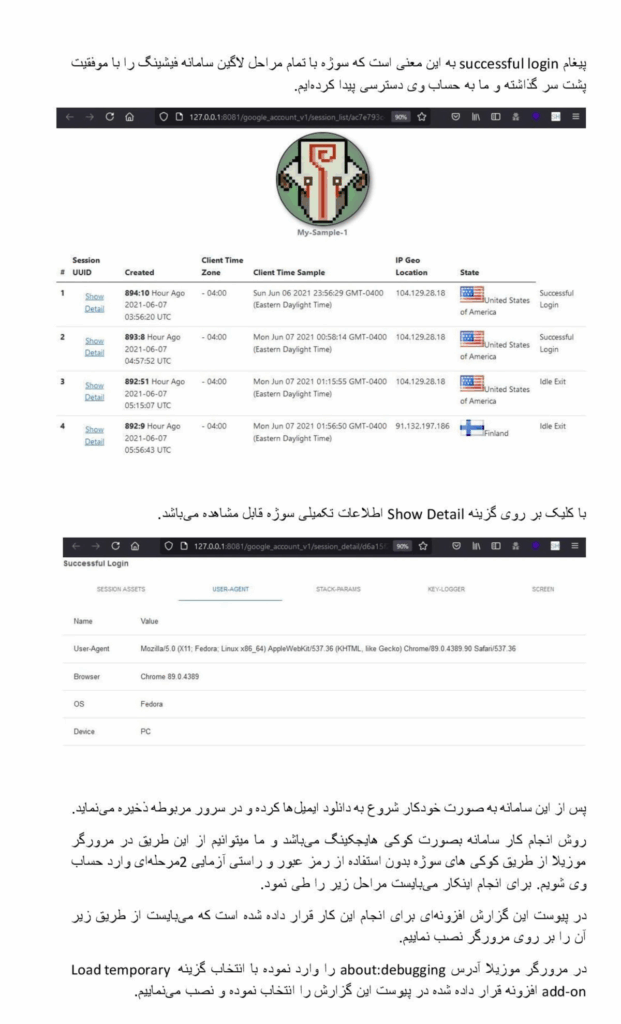
According to the leak’s introductory documents, Charming Kitten has allocated considerable resources to tracking Iranians labeled as “regime opponents”, both within the country and across the global diaspora. This persistent focus on dissidents, journalists, and activists abroad aligns with a broader Iranian strategy of integrating cyber operations with real-world surveillance and intimidation campaigns.
Human rights organizations have long reported that the Iranian government leverages a combination of digital espionage, coercion, and transnational repression to silence opposition voices. The leaked materials—detailing operational logs, target lists, and internal tasking orders—offer rare, primary-source evidence of the bureaucratic and military coordination underpinning these efforts. They illuminate how state-sponsored cyber units like Charming Kitten serve as extensions of Iran’s domestic intelligence apparatus, blurring the line between cybersecurity operations and political repression.
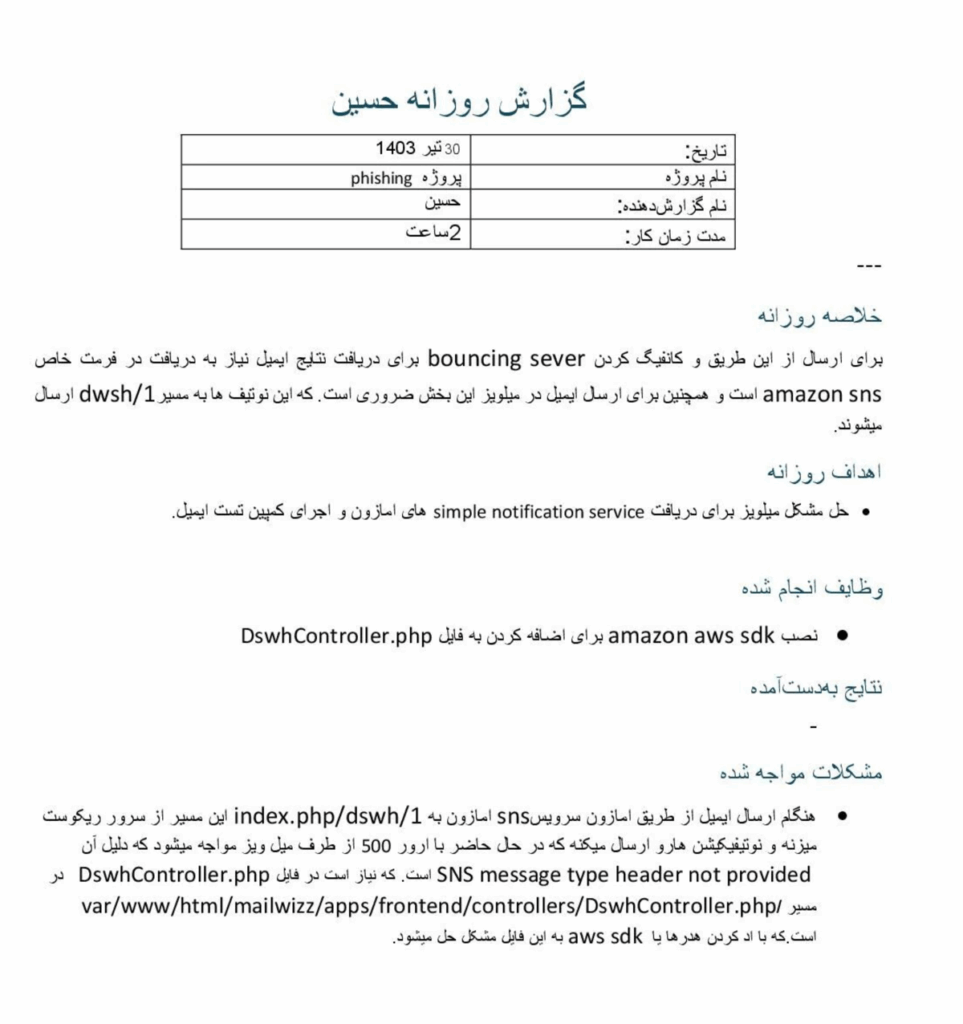
Conclusion
The operations attributed to APT35 (Charming Kitten / Educated Manticore) reflect the strategic persistence, adaptability, and geopolitical intent that define Iran’s state-sponsored cyber ecosystem. By blending long-term social engineering, custom malware development, and the abuse of trusted cloud services, the group continues to evolve its playbook—driven by goals of espionage, surveillance, and information dominance in alignment with Tehran’s regional ambitions.
The KittenBusters leak provides an unprecedented window into the inner mechanics of this threat actor—revealing not just its technical sophistication, but also its organizational hierarchy, daily workflows, and direct links to the Islamic Revolutionary Guard Corps (IRGC). These insights underscore the bureaucratic precision of modern cyber warfare, where offensive operations are managed with the discipline and structure of an intelligence agency.
Charming Kitten’s sustained focus on government institutions, energy infrastructure, defense contractors, media entities, academia, and diaspora communities illustrates a layered and persistent targeting strategy—one that merges strategic espionage with domestic repression. The fusion of digital espionage and psychological operations within Iran’s broader intelligence framework highlights the regime’s growing reliance on cyber power as an instrument of statecraft and control.
Ultimately, APT35 embodies how cyber espionage has evolved into a core extension of national policy—serving as a vehicle for regime preservation, regional influence, and intelligence gathering. The exposure of its internal workings not only undermines operational secrecy, but also provides the global cybersecurity community with rare insight into the evolution of Iranian cyber doctrine—a doctrine that intricately weaves espionage, propaganda, and digital authoritarianism into a cohesive state strategy.
MITRE ATT&CK
Initial Access
| Technique | Technique ID | Use |
|---|---|---|
| Spearphishing Attachment | T1566.001 | Used malicious document lures in emails impersonating news outlets, universities, or HR departments (e.g., “Deutsche Welle”, “Jewish Journal”) to deliver malware (e.g., PupyRAT, PowerShell tools). |
| Spearphishing Link | T1566.002 | Commonly used credential phishing pages disguised as Google, Yahoo, Outlook login portals. |
| Drive-by Compromise | T1189 | Lured victims to fake websites mimicking trusted domains (e.g., spoofed ClearSky website). |
| Exploit Public-Facing Application | T1190 | Used Log4Shell to gain initial access in some 2021–2022 campaigns. |
Credential Access
| Technique | Technique ID | Use |
|---|---|---|
| Credential Phishing | T1566 | Core technique in nearly all campaigns, harvesting email credentials through spoofed login pages. |
| Brute Force | T1110 | Conducted password spraying to access targeted accounts. |
| Credentials from Password Stores | T1555 | TA453 reportedly harvested browser-stored credentials and tokens. |
Discovery
| Technique | Technique ID | Use |
|---|---|---|
| System Information Discovery | T1082 | PowerShell-based implants like POWERSTAR gathered host metadata. |
| File and Directory Discovery | T1083 | Malware modules enumerate directories for exfiltration targets. |
| Network Service Scanning | T1046 | Recon of internal networks reported during ransomware-style attacks by COBALT MIRAGE. |
Persistence
| Technique | Technique ID | Use |
|---|---|---|
| Web Shell | T1505.003 | Planted ASPX web shells during exploit operations (Log4Shell, Exchange). |
| Valid Accounts | T1078 | Maintained persistence using compromised accounts across M365 and VPN. |
Defense Evasion
| Technique | Technique ID | Use |
|---|---|---|
| Obfuscated Files or Information | T1027 | Used password-protected ZIPs to evade scanning during delivery. |
| Masquerading | T1036 | Impersonated legitimate organizations and individuals (e.g., fake podcast invites, fake researchers). |
Command and Control
| Technique | Technique ID | Use |
|---|---|---|
| Application Layer Protocol: Web Protocols | T1071.001 | Used HTTPS for C2 over legitimate-looking domains. |
| Custom C2 Protocol | T1095 | Educated Manticore campaign used custom backdoors and encrypted C2. |
Collection
| Technique | Technique ID | Use |
|---|---|---|
| Email Collection | T1114 | Collected inbox data and contact lists from targeted accounts. |
| Input Capture: Keylogging | T1056.001 | Reported in use by POWERSTAR variants. |
| Screen Capture | T1113 | POWERSTAR and other RATs included screenshot capabilities. |
Exfiltration
| Technique | Technique ID | Use |
|---|---|---|
| Exfiltration Over Web Service | T1567 | Exfiltrated stolen files to attacker-controlled cloud storage (Google Drive, OneDrive). |
| Exfiltration Over Web Service: To Cloud Storage | T1567.002 | Continued use of RClone and similar tools reported. |
Impact
| Technique | Technique ID | Use |
|---|---|---|
| Data Destruction | T1485 | Cobalt Mirage (affiliated group) engaged in disk wipers in some ransomware-like operations. |
| Data Encrypted for Impact | T1486 | Employed ransomware to pressure victims in “ransom-then-steal” operations. |
| Defacement | T1491 | Less frequent, but fake news defacements have been documented in psychological ops. |
Known Tools
| Tool Name | Tool Hash | MITRE ATT&CK ID |
|---|---|---|
| EmailDownloader.exe | 35a485972282b7e0e8e3a7a9cbf86ad93856378fd96cc8e230be5099c4b89208 | S0002 |
| Pavilion.exe | 00b5d45433391146ce98cd70a91bef08 | S0194 |
| PuTTY | 19c0977fdbc221f7d6567fb268a4ef4cd2a759fcbc1039a82366978089f080d2 | S0218 |
| FUDDO~1.EXE | af5c01a7a3858bc3712ab69bc673cec4 | S0154 |
| er.exe | 72071c6471e0dc8c1c23fc149c816f8f2fbf163e2de5debfbf741f178620e846 | S0029 |
| WEXTRACT.EXE.MUI | 610fac8675cb9df3af83449ccdb814052a7f66c3 | S0089 |
| wuauclt.exe | b030729cbcbc045528fb13df8c57f1d2a385e176 | S0357 |
| systemnetwork.bin | e5ee874bd59bb2a6dec700686544e7914312abff166a7390b34f7cb29993267a | S0070 |
| Sponsor | c4dbda41c726af9ba3d9224f2e38fc433d2b60f4a23512437adeae8ef8986c57 | S0160 |
| csext.exe | 15121b7cbd15143fc0118e06ebe70b7dc1e239b21d865b2c750ed8a0f1f00ef2 | S1047 |
IOCs (Indicators of Compromise)
File Hashes (SHA-256)
| Hash |
|---|
| 03d0e7ad4c12273a42e4c95d854408b98b0cf5ecf5f8c5ce05b24729b6f4e369 |
| 35a485972282b7e0e8e3a7a9cbf86ad93856378fd96cc8e230be5099c4b89208 |
| 5afc59cd2b39f988733eba427c8cf6e48bd2e9dc3d48a4db550655efe0dca798 |
| 6dc0600de00ba6574488472d5c48aa2a7b23a74ff1378d8aee6a93ea0ee7364f |
| 767bd025c8e7d36f64dbd636ce0f29e873d1e3ca415d5ad49053a68918fe89f4 |
| 977f0053690684eb509da27d5eec2a560311c084a4a133191ef387e110e8b85f |
| ac8e59e8abeacf0885b451833726be3e8e2d9c88d21f27b16ebe00f00c1409e6 |
| cd2ba296828660ecd07a36e8931b851dda0802069ed926b3161745aae9aa6daa |
| 668ec78916bab79e707dc99fdecfa10f3c87ee36d4dee6e3502d1f5663a428a0 |
| 724d54971c0bba8ff32aeb6044d3b3fd571b13a4c19cada015ea4bcab30cae26 |
| 24a73efb6dcc798f1b8a08ccf3fa2263ff61587210fdec1f2b7641f05550fe3b |
| 28332bdbfaeb8333dad5ada3c10819a1a015db9106d5e8a74beaaf03797511aa |
| e6f4ce982908108759536f5aff21fa6686b8ea8153fdd4cdd087cceff5f1748a |
| 927289ddccbb1de98fe3f8af627296d0d7e9833c8f59e5e423fe283b6792da89 |
| 9dce6086c61c23420ac497f306debf32731decc5527231002dbb69523fad3369 |
| 6e842691116c188b823b7692181a428e9255af3516857b9f2eebdeca4638e96e |
| bc8f075c1b3fa54f1d9f4ac622258f3e8a484714521d89aa170246ce0470144 |
IPv4 Addresses
| Address |
|---|
| 54.37.164.254 |
| 109.202.99.98 |
| 134.19.188.242 |
| 134.19.188.243 |
| 134.19.188.244 |
| 134.19.188.246 |
| 185.23.214.188 |
| 213.152.176.205 |
| 213.152.176.206 |
| 146.59.185.15 |
| 146.59.185.19 |
| 185.23.214.187 |
| 85.114.138.96 |
| 168.100.8.190 |
| 168.100.10.216 |
Domains
| Domain |
|---|
| linkedinz.me |
| listen-books.com |
| lukoil.in |
| mastergatevpn.com |
| microsoftcdn.co |
| microsoftdefender.info |
| microsoftedgesh.info |
| mideasthiring.com |
| office-shop.me |
| onedrivelive.me |
| onedriveupdate.net |
| online-audible.com |
| online-chess.live |
| outlookde.live |
| outlookdelivery.com |
| remgrogroup.com |
| saipem.org |
| sauditourismguide.com |
| savemoneytrick.com |
| sharepointnotify.com |
| sparrowsgroup.org |
| supportskype.com |
| talent-recruitment.org |
| talktalky.azurewebsites.net |
| thefreemovies.net |
| updateddns.ddns.net |
| updatedefender.net |
| updatedns.ddns.net |
| updateservices.co |